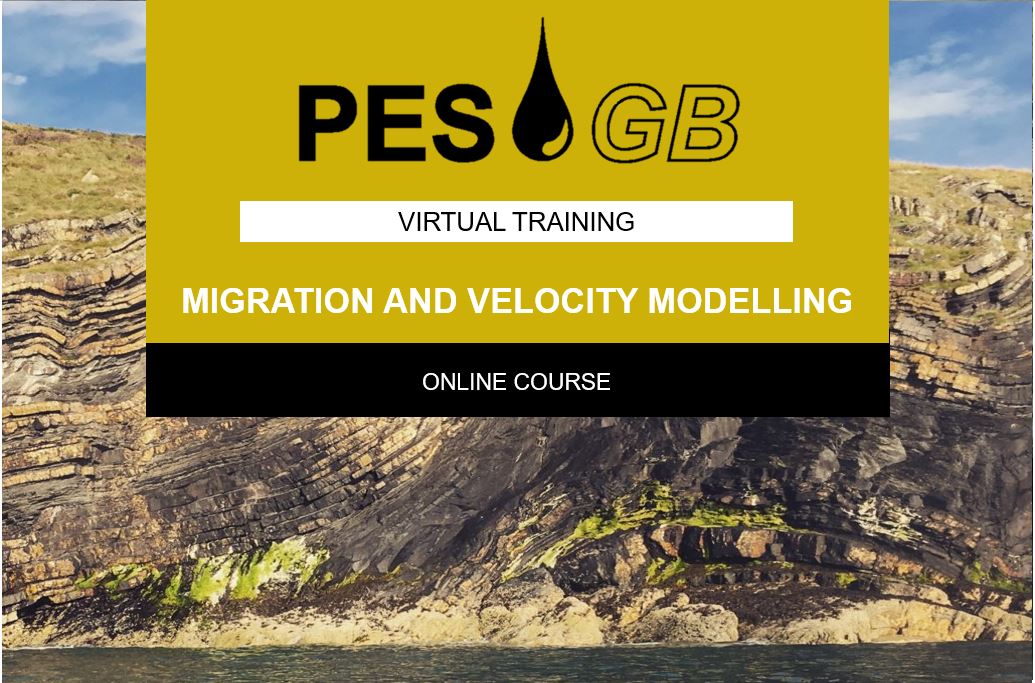17th September 2020
Event phone:
Course Details
The course will commence with an overview of different migration schemes, and cover the motivations for building detailed velocity models, and briefly discuss the inherent limitations on our ability to build a detailed model.
Current-day practice will be covered, exemplified via many case-studies, and we will briefly discuss the less well known and emerging techniques. The approach will mostly be non-mathematical, and will rather try to concentrate on an intuitive understanding of the principles, and demonstrate them via case histories. The bias in this course is towards those techniques that have seen widespread industrial use over the past 30 years. Unfortunately, some topics will not be covered, in-part due to the time constraints: these omissions will include consideration of VSP and multi-component data, and Marchenko imaging.
Prerequisites (Knowledge/Experience/Education Required)
The course is designed to be followed by anyone with a broad geoscience background: no specific detailed foreknowledge is required, although a familiarity with geophysical terminology will be useful.
Course outline
For the topics listed below, real data examples will be used to demonstrate the application and limitation of each technique.
– Why do we need a detailed velocity model?
- Review of migration schemes
- The limitations of time migration and benefits of depth migration
- Snell’s law and how to ignore it
- How does depth migration differ from time migration?
- Is depth migration always necessary?
- Ray methods versus wavefield extrapolation methods
- One-way versus two-way propagation
- Creating gathers in wavefield extrapolation methods
- Pre-processing considerations for RTM
– How detailed can we get?
- Sources of uncertainty
- Non-uniqueness and ambiguity
- Limits on resolution
– Resolving short-scale-length velocity anomalies:
- Anisotropy versus heterogeneity (and other higher order moveout effects)
- The mechanics of tomographic inversion with ray theory
- Parametric versus non-parametric picking of residual moveout
- Structural constraints, MAZ, OVT, and Q tomography
- The mechanics of tomographic inversion with wavefield extrapolation theory (FWI)
– Examples of current industrial practice for various geological settings (time permitting):
- Resolving near-surface velocity anomalies
- Seismic response to strong vertical velocity change (e.g. chalk, basalt, salt)
- Seismic response to strong lateral velocity change (e.g. salt walls, lateral terminations)
- Comparisons of ray tomographic and FWI models for specific case studies
– The Future: emerging R&D directions (time permitting)
- Waveform inversion developments
- Least squares migration
- Migrating multiples
- Full wavefield imaging
- Scattered wavefield imaging
- ‘Adaptive optical imaging’
- Bayesian uncertainty estimation (putting error bars on images)
Learner Outcomes
Upon completion of this course, the participants should be able to:
- Describe how migration works, in terms of the underlying physics and the associated approximations involved
- Classify model building and migration schemes in terms of the theory on which they are based (waves versus rays)
- Decide which migration and model building scheme are appropriate for imaging a given geological environment
- Characterize the limitations of model building and migration schemes, in terms of imaging artifacts
- Differentiate between the current state-of-the art and future imaging and parameter estimation technologies
To access member-only events or to benefit from the reduced member fees please visit https://www.ges-gb.org.uk/membership/ to find out how to become a PESGB member.
Speaker Biography - Ian Jones
Ian Jones is a Geophysical Advisor based in ION’s UK data processing centre near London.
He holds a PhD in Geophysical signals processing, an MSc in seismology, and a joint-honours BSc in Physics with Geology.
He joined ION GXT in 2000 after spending 15 years in R&D with CGG in London and Paris. His areas of interest include velocity model building and seismic imaging, and he regularly teaches the EAGE/SEG continuing education course ‘An Introduction to Migration & Velocity Model Building’.
He is an associate editor for the journals ‘Geophysics’ and ‘Geophysical Prospecting’, serves on the SEG’s editorial and the EAGE’s technical programme committees, and serves as an external lecturer at Imperial College London and the University of Leeds.
In 2003 he was awarded the EAGE’s Anstey Medal for ‘contributions to the depth imaging literature’, in 2012 was made the SEG’s Honorary Lecturer for Europe in recognition of his ‘contributions to advancing the science and technology of geophysics’, conducted the international 2018/2019 EAGE Education Tour, the topic being ‘Velocities, Imaging, and Waveform Inversion’, and awarded Honorary Life Membership by the EAGE in 2018.
Ian has published four books, contributed the chapter on model building to the new SEG online encyclopaedia, and published over 70 articles on signals processing and imaging.
Venue Information
Venue information
Venue name:
Online
Venue address:
This event will be delivered online.


